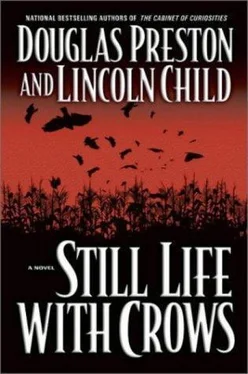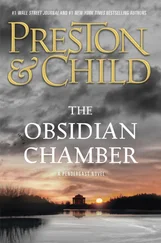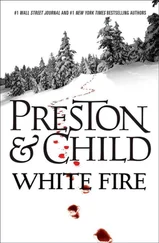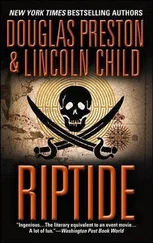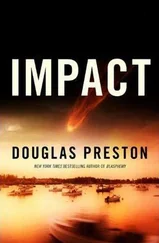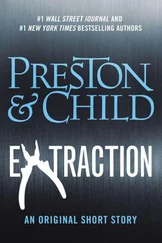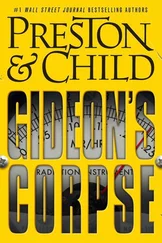Douglas Preston - Still Life With Crows
Здесь есть возможность читать онлайн «Douglas Preston - Still Life With Crows» весь текст электронной книги совершенно бесплатно (целиком полную версию без сокращений). В некоторых случаях можно слушать аудио, скачать через торрент в формате fb2 и присутствует краткое содержание. Жанр: Триллер, на английском языке. Описание произведения, (предисловие) а так же отзывы посетителей доступны на портале библиотеки ЛибКат.
- Название:Still Life With Crows
- Автор:
- Жанр:
- Год:неизвестен
- ISBN:нет данных
- Рейтинг книги:5 / 5. Голосов: 1
-
Избранное:Добавить в избранное
- Отзывы:
-
Ваша оценка:
- 100
- 1
- 2
- 3
- 4
- 5
Still Life With Crows: краткое содержание, описание и аннотация
Предлагаем к чтению аннотацию, описание, краткое содержание или предисловие (зависит от того, что написал сам автор книги «Still Life With Crows»). Если вы не нашли необходимую информацию о книге — напишите в комментариях, мы постараемся отыскать её.
Still Life With Crows — читать онлайн бесплатно полную книгу (весь текст) целиком
Ниже представлен текст книги, разбитый по страницам. Система сохранения места последней прочитанной страницы, позволяет с удобством читать онлайн бесплатно книгу «Still Life With Crows», без необходимости каждый раз заново искать на чём Вы остановились. Поставьте закладку, и сможете в любой момент перейти на страницу, на которой закончили чтение.
Интервал:
Закладка:
Corrie tried to scream, but the squeezing had already closed off her windpipe. She thrashed, struggled, saw stars begin to flash in front of her eyes.
And still he squeezed. And as consciousness flickered and her limbs began to relax involuntarily, Corrie desperately tried to reach out, to claw the darkness, to push him away . . .
His hand gradually relaxed and released her. She fell, gasping, drawing in air, her head pounding. His hand went back to her hair, petting it.
Then he suddenly stopped. His hand withdrew, and he stepped back.
Corrie lay there, terrified, silent. She heard a sniffing noise, then another, and another. He seemed to be snuffling the air. She noticed then that the faintest of breezes was moving through this section of the cave. She could smell the outside world: the ozone and moisture from the storm, the earth, the cool nocturnal smells, pushed aside—if only a little—the stench of this nightmarish place. The smell seemed to beckon him, call him away.
And he was gone.
Forty-Nine
I t was 8:11P.M. : normally the hour of sunset. Except that to western Kansas sunset had already come, four hours early.
Since early afternoon, a front of cool air one thousand miles long, pushing down from Canada, had been forcing itself across a region of the Great Plains that for several weeks had remained parched and dry. As the front moved, rising air before it began to pick up fine particles of dust. Soon this manifested itself in the form of dust devils: spiraling vortexes of dirt that rose sharply into the dark air. As the front moved on, it grew in intensity, raising the dry topsoil, feeding off itself until it had formed a massive wall of whistling, roiling dust. Quickly, it mounted to a height of ten thousand feet. On the surface, visibility was decreased to less than a quarter of a mile.
As the front moved from west to east across Kansas, dust storm warnings preceded it. The dark brown wall bore down on town after town, engulfing one after the other. As it went, the cold front, laden with dust, drove itself like a wedge into the hot, dry, dead air that had been suffocating the Great Plains. As they collided, the air masses of differing density and temperature struggled for supremacy. This disturbance caused a massive low-pressure system to form, wheeling counterclockwise over almost a hundred thousand square miles of the High Plains. Ultimately, the warm air rising from the ground penetrated the cooler mass above, boiling into towering cumulonimbus clouds that rose taller and taller, until they appeared as dark angry mountains against the sky, larger than the Himalayas. The great mountain chain of clouds flattened against the tropopause, spreading out into a series of massive, anvil-shaped thunderheads.
As the storm matured, it broke into several cells that moved together as a disorganized yet single unit: mature cells forming at the storm’s center, with newer ones developing on the periphery. In the cells that approached Cry County, the anvil-shaped top of a cell began to bulge upward. This “overshoot” indicated that the rising torrent of air at the storm’s center was so powerful it had broken through the tropopause into the stratosphere. On the underside of the storm, ugly, bulging mammatus pouches appeared: bellwethers for heavy rainfall, hail, windbursts, and tornadoes.
The National Weather Service had been tracking the system with radar, satellites, and the reports of pilots and civilian “spotters.” The dust storm and thunderstorm bulletins were upgraded to include tornado watches. Regional offices of the National Weather Service began advising local authorities of the need for emergency action. And always it remained vigilant for that rarest, yet worst type of storm: the supercell thunderstorm. In this far more organized event, the main updraft—known as a mesocyclone—reaches speeds of close to two hundred miles per hour. Such storms could create three-inch hail, eighty-mile-per-hour downbursts of wind, and tornadoes.
And already, virgas of rain were hovering over the landscape, evaporating as quickly as they fell, blasting the ground with localized microbursts that uprooted trees, flattened fields, and peeled the roofs off trailers. Hailstones spilled from the sky, stripping corn ears from their stems and ripping up fields, tearing the dry stalks to tattered sticks.
Many thousands of feet below this cell, almost lost in the approaching storm front, a lone Rolls-Royce hurtled along at one hundred miles an hour, two and a half tons of precision-engineered steel cutting the darkness of a long and lonely ribbon of tar.
Inside, the driver kept one hand on the wheel while glancing at the laptop open on the seat beside him. The laptop showed the real-time progress of the storm, a composite downloaded by a mosaic of weather satellites orbiting high above.
Coming from Topeka, he had exited Interstate 70 just past Salina, and was now passing the outskirts of Great Bend. From here on, the road to Medicine Creek would become far more local. That—and the approaching storm itself—would force him to slow dramatically.
And yet time was of the essence. The killer would soon kill again. In all likelihood he would be attracted to the storm, the violence and darkness of it, and he was almost certain to kill again that night.
He picked up his cell phone and dialed. Once again a recorded voice told him that the party he was trying to reach was out of range.
Out of range. He pondered that phrase: out of range.
And he pushed the Rolls ahead even faster.
Fifty
E ver since he’d seen The Wizard of Oz as a child, Tad Franklin had been fascinated by tornadoes. It was a source of secret embarrassment that, living all his life in western Kansas, the very center of “tornado alley,” he had never managed to see one. He’d seen the aftereffects more often than he’d liked—twisted trailer parks, trees blasted into toothpicks, cars lifted and thrown across the road—but somehow he’d never seen an actual funnel cloud with his own eyes.
Tonight he felt sure that was going to change. All day long there had been weather advisories. Every hour, it seemed, the weather service alerts had grown in intensity: thunderstorm watch; severe thunderstorm warning; tornado watch. A brutal dust storm had come screaming through an hour before that had torn away placards and shingles, sandblasted cars and houses, knocked down trees, and reduced visibility to a few hundred yards. And then at 8:11 that evening, with Tad alone in the sheriff’s office, the news came: the whole of Cry County had just been placed under a tornado warning until midnight. F-scale tornadoes of magnitude 2 or even 3, with two-hundred-mile-an-hour winds and devastating force, were possible.
Ten seconds later, Sheriff Hazen was on the radio.
“Tad,” he was saying, “I’m in Deeper, about to head back.”
“Sheriff—”
“I don’t have a lot of time. Listen to me. We’ve made a lot of progress on the case. We believe the killer is hiding in Kraus’s Kaverns.”
“The killer—?”
“For chrissakes, let me finish. It’s most likely McFelty, Norris Lavender’s henchman. He’s been holed up in that moonshine room back of Kraus’s Kaverns. But we’ve got to move fast in case he decides to pull out under cover of the storm. We’re putting together a team to go in at ten o’clock. But we also just got word from the NWS about a tornado warning for all of Cry County—”
“I just got the call.”
“—and I’ve got to put you on the tornado side of things. You know the drill?”
“Sure do.”
“Good. You get the word out, make sure everything’s battened down in Medicine Creek and the outlying areas. We’ll be arriving around nine, and then all hell’s going to break loose—and I don’t mean the weather. Just be sure to have a couple strong pots of fresh coffee. You’re not going in with us, so don’t worry. Somebody’s got to hold down the fort.”
Читать дальшеИнтервал:
Закладка:
Похожие книги на «Still Life With Crows»
Представляем Вашему вниманию похожие книги на «Still Life With Crows» списком для выбора. Мы отобрали схожую по названию и смыслу литературу в надежде предоставить читателям больше вариантов отыскать новые, интересные, ещё непрочитанные произведения.
Обсуждение, отзывы о книге «Still Life With Crows» и просто собственные мнения читателей. Оставьте ваши комментарии, напишите, что Вы думаете о произведении, его смысле или главных героях. Укажите что конкретно понравилось, а что нет, и почему Вы так считаете.
